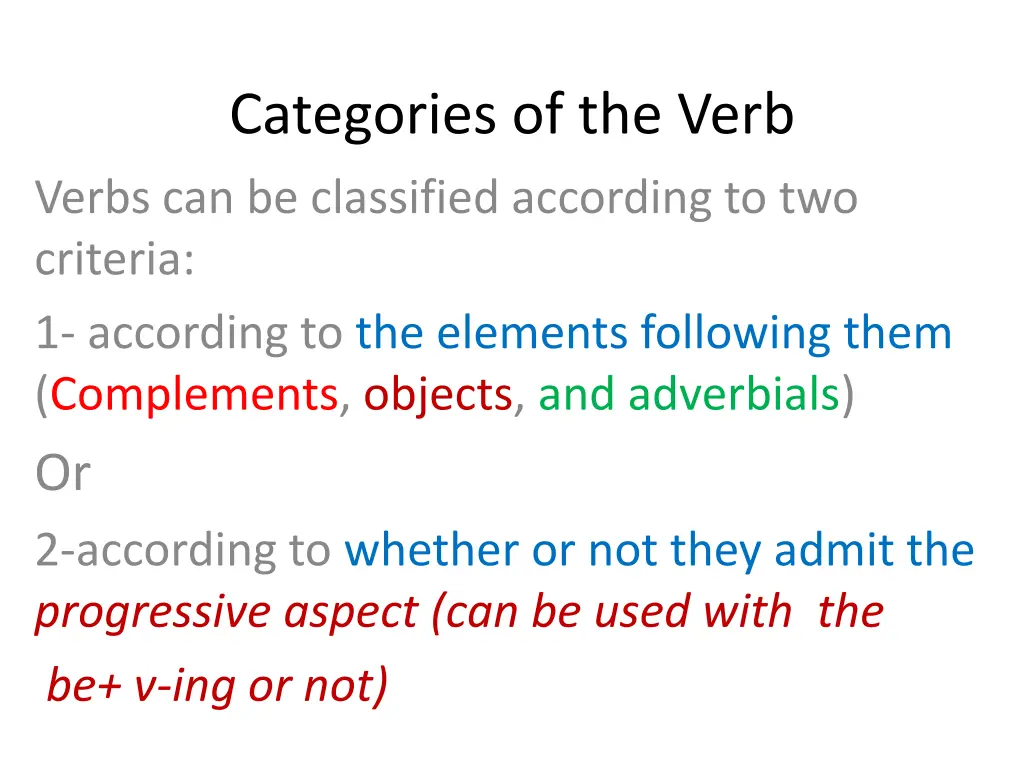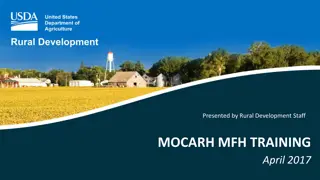
Understanding Verb Categories and Types in English Grammar
Learn about the classification of verbs based on elements following them and their compatibility with the progressive aspect. Explore sentence patterns and examples to grasp extensive, intensive, stative, and dynamic verb types.
Download Presentation

Please find below an Image/Link to download the presentation.
The content on the website is provided AS IS for your information and personal use only. It may not be sold, licensed, or shared on other websites without obtaining consent from the author. If you encounter any issues during the download, it is possible that the publisher has removed the file from their server.
You are allowed to download the files provided on this website for personal or commercial use, subject to the condition that they are used lawfully. All files are the property of their respective owners.
The content on the website is provided AS IS for your information and personal use only. It may not be sold, licensed, or shared on other websites without obtaining consent from the author.
E N D
Presentation Transcript
Categories of the Verb Verbs can be classified according to two criteria: 1- according to the elements following them (Complements, objects, and adverbials) Or 2-according to whether or not they admit the progressive aspect (can be used with the be+ v-ing or not)
In terms of the first classification verbs are either followed by: A- complement or obligatory Adverbial B- other elements on no (obligatory) elements In A the verb is intensive. These are verb be or L.V. In B the verb is extensive. In B the verb can be followed by: 1- nothing, or only optional adverbials called extensive and intransitive 2- by one object called extensive mono-transitive 3- two objects called extensive di-transitive 4- an object + an object complement extensive complex transitive
According to the second classification a verb that permits the simple- progressive contrast is called dynamic. E.g. I wrote a poem. > I was writing a poem. A verb that sticks to the simple and cannot be used with the progressive is called stative. E.g. I knew the answer.> * I was knowing the answer.
Verbs Types and Sentence Patterns Below are the sentence patterns and the verb types they contain: 1-S+V (+A.s) > Extensive & Intransitive verb 2- S+V+Cs(+A.s) > Intensive verb 3-S+V+A(place)(+A.s) > Intensive verb 4-S+V+ O(+A.s) > Extensive & mono-transitive verb 5- S+V+O+A(+A.s) >Extensive& mono-transitive = 6- S+V+O+O (+A.s) > Extensive & di-transitive = 7- S+V+O+Co(+A.s) > Extensive & complex trans. = Examples are below:
1- Jack travelled ( by his car to Canada last week). 2-a- Jack is an engineer (in a big company now). b-Jack became the party spokesman(two days ago). 3- Jack has been there (since April). 4- Jack delivered a speech(last month). 5- Jack put his glasses on the desk (a while ago). 6- Jack told me a secret (because he trusts me). 7- Jack considers me his best friend (for ever).
Some extensive /transitive verbs are stative, while many are dynamic: We see you often. ( see is stative ) We thought them our friends. ( thought is stative) We are helping them. ( help is dynamic)

